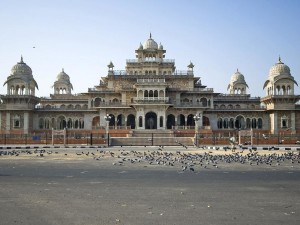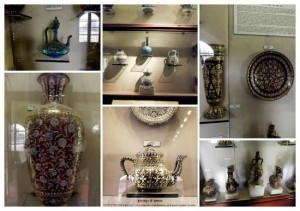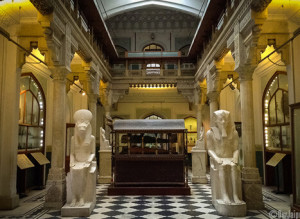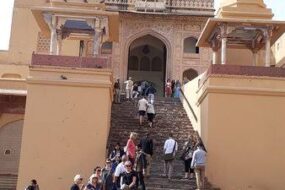When the foundation stone of Albert Hall was laid during the visit of the Prince of Wales, Albert Edward to Jaipur in 1876, it had yet to be determined what use it would be put to. There were some suggestions about cultural or educational use or as a town hall. However in 1880 Maharaja Sawai Madho Singh II approved a suggestion by Dr. Thomas Holbein Hendley, Resident Surgeon (whose interests extended beyond his medical responsibilities) to open a museum of Industrial Arts to display products of local craftsmen. A small museum was created in 1881 in temporary accommodation and proved most popular. Additionally, Hendley in 1883 mounted a Jaipur Exhibition at Naya Mahal (old Vidhan Sabha). The purpose of these exercises was to acquaint local craftsmen with the best examples of art work and handicrafts of India to inspire them to improve their skills, thereby protecting and preserving traditional art and reviving skills, while providing greater employment for artisans. It was also the intention that the display would help to educate youth in a wide variety of fields, entertain and inform the people of Jaipur.

The Albert Hall was completed in 1887 by the architect Samuel Swinton Jacob, Director of Jaipur PWD. The temporary museum and the exhibition whose artifacts had been collected from several parts of India and its neighbourhood were merged and shifted to their permanent home in the new museum. The building itself became an integral part of the display, its Indo-Saracenic architecture and stone ornamentation, became a source of reference for varied classical Indian styles of design from Mughal to Rajput. Even the corridors were decorated with murals in a variety of styles including the Ramayan, reproducing paintings from illustrations in the Persian Razmnama prepared for Emperor Akbar. European, Egyptian, Chinese, Greek and Babylonian civilizations were portrayed in the other murals to enable the people of the region to compare and contrast them with their own and develop their knowledge of history and art.

Thus, Albert Hall became a centre for imparting knowledge of history of civilizations, inspiring artisans to improve their skills, and preserving & developing traditional Indian arts, crafts, architectural forms and not least as Hendlay said to amuse and instruct the common people”.

Confronting the gates of the city by 1890 there stood the museum, the zoo and the Mayo Hospital in a public park representing the dream of the former Maharaja Sawai Ram Singh which was realized by his successor Sawai Madho Singh which showed the new face of a Jaipur moving into the modern age.

Rudyard Kipling (himself the son of a curator) on a visit was so impressed by the architecture, woodwork, display, exhibits, cleanliness and not least the curators office that he wrote “it is now a rebuke to all other museums in India from Calcutta downwards”.
In 1898 on the eve of his departure, Hendley wrote to the Durbar (than rular of Jaipur) royal family (King of Jaipur) that on average the annual attendance exceeded a quarter million people and in eleven years there were more than three million visitors.
Info Credit : alberthalljaipur.gov



